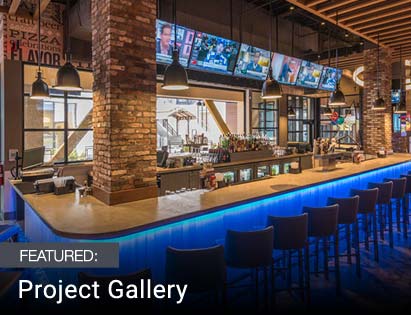Resources
Rope Light Basics: Designing with Rope Lights

Rope lights are an easy way to introduce creativity and color into your lighting design. They are made up of tiny lights, either incandescent bulbs or light emitting diodes (LEDs), which are spaced about an inch apart and covered in heavy-duty plastic tubing. Their construction provides for strength and durability, making them suitable for both indoor and outdoor use. However, it is their flexibility and customizable, form-fitting nature that distinguishes rope lights from other light sources.
The last consideration is what type of technology is within the rope light. As mentioned before, rope lights can have one of two types of light sources at their core. The most common rope light used to be the standard incandescent bulb rope light. It provided good light output, was available in all the options discussed above, and was relatively inexpensive. But they do use up a great deal of energy, usually 5 - 6 watts per foot, and can generate a fair amount of heat. The newer development in rope light design is the use of LEDs. LEDs have several advantages over their incandescent cousins, the primary being their high energy efficiency. In fact, most LED rope lights use less than 1 watt per foot. They are also cooler to the touch, more durable, and can have a bulb life expectancy rated to over 100,000 hours. These advantages have now made LED rope lights the dominant and most common types of rope light available.
Lighting design should be a creative process and rope lights can be integral tools to help you achieve your vision. They are a unique and versatile form of lighting; a perfect way to express yourself through illumination. The only limit is imagination.
Uses
Rope lights are a very versatile product that can be installed just about anywhere, conforming to the shape of their surroundings. One of the most common uses is as a cove or accent light. Placing a rope light behind another object can provide a soft and appealing accent glow. This method is often used in home theaters, living rooms, bars, clubs, trade shows, and anywhere else where a soft glow is desired. A second use for rope lights is perimeter lighting, where a run of rope light outlines or wraps around an architectural element in order to define it and bring attention to it. This technique can be used around decks, staircases, railings, and building facades. Another common use is to place the rope lights in the foreground of your space as the main focal point. This works especially well when the rope lights are twisted and bent into interesting forms or recognizable shapes or sculptures. An easy way to do this is to buy pre-made rope light displays such as a palm tree for your patio or game room or a 3-dimensional Christmas tree for your front yard. This brings us to the most popular use for rope lights, holiday decorations; where they can be used to light up...just about everything!Wire Count
There are a variety of options to consider when purchasing rope lights. The first is wire number. This describes the number of wires that run the length of the tubing, connecting the bulbs together. Note that rope lights with different numbers of wires are able to provide different characteristics for your lighting, making it important to have your end result in mind as you choose your lights. On a typical rope light that has 2 wires, all the bulbs must operate in unison, typically steady on, dimming, or flashing. A multi-wire rope light, such as 3-wire, 4-wire, or 5-wire, builds on these features by providing chasing effects. The more wires, the higher quality the chasing effect is. All rope lights will work out of the box in steady-on and off modes, but in order to generate special effects, the purchase of an external controller is required.Length
Another option to consider with rope lights is the size of the outer plastic tubing. Larger diameters are more durable, but have less flexibility than those with smaller diameters. In planning your design, something else to determine is the length of light needed and how to achieve that length. One way is by purchasing rope lights in pre-terminated, shorter segments, allowing for the units to be connected together until the total length is reached. Rope lights can also be purchased in bulk spools, where the lights can be cut, terminated, and spliced together, using only as much of the rope light as you need for each run.Core Technology
Lighting design should be a creative process and rope lights can be integral tools to help you achieve your vision. They are a unique and versatile form of lighting; a perfect way to express yourself through illumination. The only limit is imagination.











